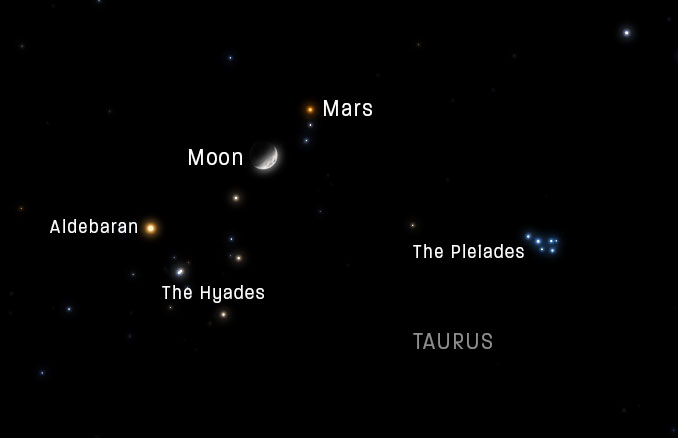
Early evenings sees Mars, the red planet, putting on a good showing among the stars of Taurus, the Bull. Mars lies not far from the splendid Pleiades open cluster (Messier 45) and the more sprawling, ‘V’-shaped Hyades open cluster, which is adorned by foreground Aldebaran (alpha [α] Tauri), the bright red giant star. This picturesque scene is then embellished further by the presence of a pretty crescent Moon.

Despite Mars being way past last October’s magnificence, it remains a relatively bright object shining at around magnitude +1.1. At October’s opposition, the red planet shone brightly at magnitude –2.8, but since then Mars has retreated to a distance of around 242 million kilometres (151 million miles), four times as far away.

As darkness falls on 19 March at about 7.30pm GMT, the red planet lies just 2.7 degrees north of a crescent Moon. This close conjunction provides a fine astro-imaging opportunity, as well as a splendid sight through a pair of binoculars or a small telescope. Mars is around 50 degrees above the west-south-western horizon and is easy to identify, lying around seven degrees north-west of Aldebaran and 9.5 degrees west of the Pleiades. It will be interesting to compare Mars’ ochre-hue with that of slightly brighter (magnitude +0.87) Aldebaran. By the end of March, Mars has faded to magnitude +1.3 and sets not long after midnight (BST).
